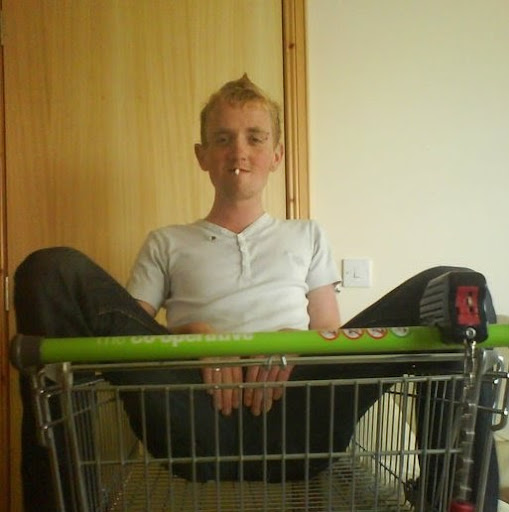Paul A Spence
age ~57
from Morrow, OH
- Also known as:
-
- Paula Spence
- Paula S Pence
Paul Spence Phones & Addresses
- Morrow, OH
- Cincinnati, OH
- Pleasant Plain, OH
- 121 Federal St, Cambridge Springs, PA 16403
- Lebanon, OH
- Medina, OH
- Hamilton, OH
- 1344 Keyridge Dr, Cincinnati, OH 45240
Work
-
Company:Hill Dickinson LLP
-
Address:
Education
-
School / High School:University Of Nebraska College Of Medicine1993
Languages
English
Specialities
Forensic Pathology
Lawyers & Attorneys
Name / Title
Company / Classification
Phones & Addresses
Vice President
Artistic Ornamental Ironworks
71462 Manitoba Ltd.
Iron Work
71462 Manitoba Ltd.
Iron Work
1406 Spruce Street, Winnipeg, MB R3E 2V7
2047756664, 7833550xxx
2047756664, 7833550xxx
Vice President
Artistic Ornamental Ironworks
Iron Work
Iron Work
2047756664
Vice President Of Development
Hope House Rescue Mission Inc
Individual/Family Services
Individual/Family Services
34 S Main St, Hamilton, OH 45044
34 S Main St, Middletown, OH 45044
5134244673, 5134231743
34 S Main St, Middletown, OH 45044
5134244673, 5134231743
APM LC
Director, Chairman
Capgemini America, Inc
Computer Consultants
Computer Consultants
9733372700
Partner
ERNST & YOUNG LLP
Isbn (Books And Publications)

License Records
Paul A. Spence
License #:
29237 - Expired
Category:
None on File
Type:
Retired
Medicine Doctors

Dr. Paul R Spence - MD (Doctor of Medicine)
view sourceSpecialties:
Forensic Pathology
Languages:
English
Education:
Medical School
University Of Nebraska College Of Medicine
Graduated: 1993
University Of Nebraska College Of Medicine
Graduated: 1993

Paul A. Spence
view sourceSpecialties:
Family Medicine, Undersea & Hyperbaric Medicine
Work:
Southeast Wound Care & Hyperbaric Medicine
310 S Silver Spg Rd, Cape Girardeau, MO 63703
5733349637 (phone), 5733350147 (fax)
310 S Silver Spg Rd, Cape Girardeau, MO 63703
5733349637 (phone), 5733350147 (fax)
Education:
Medical School
Saint Louis University School of Medicine
Graduated: 1966
Saint Louis University School of Medicine
Graduated: 1966
Procedures:
Wound Care
Conditions:
Anemia
Arterial Thromboembolic Disease
Diabetes Mellitus (DM)
Gout
Multiple Sclerosis (MS)
Arterial Thromboembolic Disease
Diabetes Mellitus (DM)
Gout
Multiple Sclerosis (MS)
Languages:
English
Description:
Dr. Spence graduated from the Saint Louis University School of Medicine in 1966. He works in Cape Girardeau, MO and specializes in Family Medicine and Undersea & Hyperbaric Medicine. Dr. Spence is affiliated with Saint Francis Medical Center and Southeast Hospital.

Paul Robertson Spence
view sourceSpecialties:
Pathology
Anatomic Pathology & Clinical Pathology
Anatomic Pathology
Forensic Pathology
Anatomic Pathology & Clinical Pathology
Anatomic Pathology
Forensic Pathology
Education:
University of Nebraska (1993)
Wikipedia References

Paul Spence
Work:
Position:
Canadian film actor • Actor from Alberta • Author • Musician
Wikipedia

Paul Spence
view sourcePaul Spence is a Canadian actor, author and musician. Born 29 January, 1976 in Calgary, Alberta, Paul is best known for his portrayal of headbanger Dean ...
Us Patents
-
Annuloplasty Devices And Related Heart Valve Repair Methods
view source -
US Patent:6419696, Jul 16, 2002
-
Filed:Jul 6, 2000
-
Appl. No.:09/610784
-
Inventors:Mark Ortiz - Milford OH
Randy Whedon - Cincinnati OH
Paul A. Spence - Louisville KY 40222 -
Assignee:Paul A. Spence - Louisville KY
-
International Classification:A61F 224
-
US Classification:623 237
-
Abstract:Devices for repairing and replacing a heart valve in various embodiments, the devices include at least first and second support rings connected together in a coiled configuration to abut opposite sides of a valve annulus. A replacement valve may be secured to the coil-shaped device. Various alternative fastening systems include suture fastening systems, mechanical fastening systems, shape memory alloy fastening systems and other fastening systems relying only on the resilience between adjacent coils. A method generally includes inserting a first end of the coil-shaped member through a valve annulus, rotating a first ring of the coil-shaped member into position on one side of the valve annulus and positioning at least a second ring of the coil-shaped member on an opposite side of the valve annulus.
-
Non-Kinking And Non-Tangling Suture Package
view source -
US Patent:6659270, Dec 9, 2003
-
Filed:Jul 22, 2002
-
Appl. No.:10/200398
-
Inventors:Craig B. Berky - Milford OH
Paul A. Spence - Louisville KY
Mark Ortiz - Milford OH -
Assignee:IDX Medical, Ltd. - Loveland OH
-
International Classification:A61B 1706
-
US Classification:206 633, 206380
-
Abstract:A suture package ( ) including a panel having a series of superimposed subpanels ( ). A suture ( ) loops back and forth on the subpanels ( ) such that adjacent loops are retained on adjacent subpanels ( ) and the adjacent subpanels separate the adjacent loops from one another. In the preferred embodiment, an accordion style panel ( ) is utilized and the series of subpanels ( ) are folded into a superimposed relationship. Various features are incorporated to reduce the instances or likelihood of kinking and tangling of the suture ( ) when pulled from the package ( ) by a user.
-
Annuloplasty Devices And Related Heart Valve Repair Methods
view source -
US Patent:6730121, May 4, 2004
-
Filed:May 14, 2002
-
Appl. No.:10/145416
-
Inventors:Mark Ortiz - Milford OH
Randy Whedon - Cincinnati OH
Paul A. Spence - Louisville KY -
Assignee:Medtentia - Lund
-
International Classification:A61F 224
-
US Classification:623 217, 623 214, 623 237
-
Abstract:Devices for repairing and replacing a heart valve in various embodiments, the devices include at least first and second support rings connected together in a coiled configuration to abut opposite sides of a valve annulus. A replacement valve may be secured to the coil-shaped device. Various alternative fastening systems include suture fastening systems, mechanical fastening systems, shape memory alloy fastening systems and other fastening systems relying only on the resilience between adjacent coils. A method generally includes inserting a first end of the coil-shaped member through a valve annulus, rotating a first ring of the coil-shaped member into position on one side of the valve annulus and positioning at least a second ring of the coil-shaped member on an opposite side of the valve annulus.
-
Implantable Heart Assist Devices And Methods
view source -
US Patent:6808483, Oct 26, 2004
-
Filed:Oct 3, 2000
-
Appl. No.:09/677981
-
Inventors:Mark Ortiz - Milford OH
Paul A. Spence - Louisville KY 40222 -
Assignee:Paul A. Spence - Louisville KY
-
International Classification:A61N 1362
-
US Classification:600 16, 600 37
-
Abstract:Heart support and assist devices for supporting and assisting the pumping action of the heart. Various embodiments include mesh support devices, devices using straps, spiral-shaped devices, catheter-based devices and related methods.
-
Annuloplasty Devices And Related Heart Valve Repair Methods
view source -
US Patent:6964684, Nov 15, 2005
-
Filed:Feb 26, 2004
-
Appl. No.:10/787581
-
Inventors:Mark Ortiz - Milford OH, US
Randy Whedon - Cincinnati OH, US
Paul A. Spence - Louisville KY, US -
Assignee:Medtentia - Lund
-
International Classification:A61F002/24
-
US Classification:623 237, 623 211
-
Abstract:Devices for repairing and replacing a heart valve in various embodiments, the devices include at least first and second support rings connected together in a coiled configuration to abut opposite sides of a valve annulus. A replacement valve may be secured to the coil-shaped device. Various alternative fastening systems include suture fastening systems, mechanical fastening systems, shape memory alloy fastening systems and other fastening systems relying only on the resilience between adjacent coils. A method generally includes inserting a first end of the coil-shaped member through a valve annulus, rotating a first ring of the coil-shaped member into position on one side of the valve annulus and positioning at least a second ring of the coil-shaped member on an opposite side of the valve annulus.
-
Means And Method Of Replacing A Heart Valve In A Minimally Invasive Manner
view source -
US Patent:RE44075, Mar 12, 2013
-
Filed:Jun 5, 2008
-
Appl. No.:12/134170
-
Inventors:Warren P. Williamson - Loveland OH, US
Paul A. Spence - Louisville KY, US
George T. Christakis - Toronto, CA
Mark Ortiz - Milford OH, US -
Assignee:Medtronic, Inc. - Minneapolis MN
-
International Classification:A61F 2/24
-
US Classification:623 211, 606153, 623 241, 623 2368
-
Abstract:A heart valve can be replaced using minimally invasive methods which include a sutureless sewing cuff that and a fastener delivery tool that holds the cuff against the patient's tissue while delivering fasteners to attach the cuff to the tissue from the inside out. The tool stores a plurality of fasteners and is self-contained whereby a fastener is delivered and placed all from inside a vessel. The fasteners are self-forming whereby they do not need an anvil to be formed. Anchor elements are operated from outside the patient's body to cinch a prosthesis to an anchoring cuff of the valve body. The cuff is releasably mounted on the tool and the tool holds the cuff against tissue and drives the fastener through the cuff and the tissue before folding over the legs of the fastener whereby secure securement between the cuff and the tissue is assured. Fasteners are placed and formed whereby fasteners are located continuously throughout the entire circumference of the cuff. A minimally invasive surgical method is disclosed, and a method and tool are disclosed for repairing abdominal aortic aneurysms in a minimally invasive manner.
-
Extremely Long Wire Fasteners For Use In Minimally Invasive Surgery And Means And Method For Handling Those Fasteners
view source -
US Patent:20020068949, Jun 6, 2002
-
Filed:Jan 17, 2002
-
Appl. No.:10/052129
-
Inventors:Warren Williamson - Loveland OH, US
Paul Spence - Louisville KY, US
George Keller - Grandview Heights OH, US
Cecil Robinson - Hilliard OH, US
Thomas Ward - Columbus OH, US -
International Classification:A61B017/08
-
US Classification:606/151000, 606/139000
-
Abstract:Wire fasteners having legs with lengths that can be one hundred times the width of the fastener are used to secure items, such as prosthesis valves to a patient during minimally invasive surgery. The fasteners are manipulated into position and then are immobilized by means of the legs thereof for tensioning, cutting and forming in situ. The fasteners are manipulated, tensioned and formed from the leg end of the fasteners. Tools for initially placing the fasteners and for immobilizing, tensioning, cutting and bending the fastener legs are disclosed. Once the fasteners are initially placed, the prosthesis is placed on the long legs of the placed fasteners and is guided into position on the legs. Once the prosthesis is in position, the legs of the fasteners are immobilized, tensioned, cut and bent into staple-like shapes to secure the prosthesis to the patient. A method for carrying out the procedure using the long fastener is also disclosed. Using the teaching of the present disclosure, a surgeon can customize a fastener to the particular surgery or even to the particular portion of surgery being performed during the surgery.
-
Surgical Clamp Devices And Methods Especially Useful In Cardiac Surgery
view source -
US Patent:20030208231, Nov 6, 2003
-
Filed:Nov 8, 2001
-
Appl. No.:09/986260
-
Inventors:Warren Williamson - Loveland OH, US
Paul Spence - Louisville KY, US
Craig Berky - Milford OH, US -
International Classification:A61B017/44
-
US Classification:606/205000, 606/151000
-
Abstract:A clamping and fluid delivery device () for occluding a vessel () during a surgical procedure. Generally, the device () includes an internal core portion () having a distal end () with a sealing surface and opposite side surfaces comprising sealing surfaces. The core portion () is inserted transversely into the vessel (). Opposed, external clamping arms () move together outside the vessel () and clamp the vessel () against the core portion (). Padding () the sealing surfaces on opposite sides of the core portion (), as well as on the distal end () engage the internal walls () of the vessel () and are opposed by padded clamping surfaces () of the arms (). The core portion moves distally simultaneously with the clamping action of the arms to provide a distal seal. A bypass cannula () and cardioplegia cannula () fluidly couple the core portion () to deliver blood and cardioplegia fluid to opposite sides of the core portion ().

Paul Spence
view source
Paul Spence
view source
Paul Spence
view source
Paul Spence
view source
Edgar Paul Spence
view source
John Paul Spence
view source
Mark Paul Spence Hallworth
view source
Paul Spence
view sourceGoogleplus

Paul Spence
Work:
Freelance - Cameraman
That Gamer Hub - Editor-in-Chief
That Gamer Hub - Editor-in-Chief
Education:
University of Central Lancashire - Media Production
Tagline:
A man with many talents - not one of which is interesting or useful.

Paul Spence
Bragging Rights:
Successfully recovering from major depression. Or successfully depressed from major recovery. There's depression and recovery involved.

Paul Spence

Paul Spence
About:
Oioi its paul hear canny be arst way riting this at the mo :)

Paul Spence

Paul Spence

Paul Spence

Paul Spence
News

Antarctic winds speeding up ice melt
view source- "When we included projected Antarctic wind shifts in a detailed global ocean model, we found water up to four degrees Celsius warmer than current temperatures rose up to meet the base of the Antarctic ice shelves," said lead author of the study Paul Spence from Australian Research Council's Ce
- Date: Jul 08, 2014
- Category: Sci/Tech
- Source: Google

Antarctic winds linked to sharp increase in global sea level
view source- we included projected Antarctic wind shifts in a detailed global ocean model, we found water up to [7.2 degrees Fahrenheit] warmer than current temperatures rose up to meet the base of the Antarctic ice shelves," Paul Spence of the ARC Centre of Excellence for Climate System Science (ARCCSS), said.
- Date: Jul 08, 2014
- Category: Sci/Tech
- Source: Google

Coastal Temperature Structure more Sensitive to Stronger Westerly Winds
view source- Paul Spence, an oceanographer at the University of NSW's Climate Change Research Centre, said in previous estimations, researches failed to take account of these winds. The strong westerly winds in the Southern Ocean will impinge coastal easterlies, which will disrupt the balance between warm and co
- Date: Jul 07, 2014
- Category: Sci/Tech
- Source: Google

Warm water likely to accelerate Antarctic ice melt and sea level rises, Australian ...
view source- "What you usually have is cold water sitting next to the ice shelves at about minus 2 degrees Celsius and then warm water further out," said Paul Spence from the Climate Change Research Centre at UNSW.
- Date: Jul 07, 2014
- Category: Sci/Tech
- Source: Google

Canadian study blames ocean acidity for mass extinction
view source- Among the co-authors of the Montenegro-led study, which is published in the latest issue of the journal Paleoceanography, are fellow St. F-X scientist Michael Melchin and University of Victoria researchers Michael Eby and Paul Spence.
- Date: Sep 08, 2011
- Source: Google
Flickr
Plaxo

Paul Spence
view sourceCox Communications

Paul Spence
view sourceProduct Director at McLaren Electronic Systems Ltd
Myspace
Classmates

Paul Spence
view sourceSchools:
Hants West Rural High School Brooklyn Swaziland 1997-2001
Community:
Merle Thompson, Kari Harvey, Donna Sandever, Jane Marsh

Paul Spence
view sourceSchools:
Spring Valley Junior High School Winnipeg Palestinian Territory, Occupie 1975-1979
Community:
Dawn Olsen, Cindy Durocher, Don Blois, Darryl Barton, Joanne Bilton, Maurice Richard

Paul Spence
view sourceSchools:
Sunset Ridge Middle School Northfield IL 1984-1988
Community:
Sally Vandervoort, Julia Kline, Amy Bear, Erika Lavin, Courtney Cranfill, Jamison Taylor, Heather Bernsten, Keith Anderson, Brigette Mccracken, Karen Siegel, Nancy Pence

Paul Spence, East High Sc...
view source
Paul Spence | Eastern Sho...
view source
Paul Spence, Cairo High S...
view source
Paul Spence, Rockville Hi...
view source
Jean Paul Spence | Roland...
view sourceYoutube
Get Report for Paul A Spence from Morrow, OH, age ~57

















